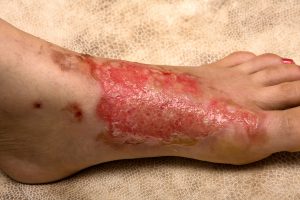Work Compensation: Burn Injury
 Michael Babboni
Personal Injury
The U.S. Occupational Safety & Health Administration (OSHA), every year more than 5,000 workers are hospitalized after getting burned at the workplace and approximately 200 of the burn injuries suffered are fatal. In fact, burns tend to be among the most serious of all workplace injuries.
Michael Babboni
Personal Injury
The U.S. Occupational Safety & Health Administration (OSHA), every year more than 5,000 workers are hospitalized after getting burned at the workplace and approximately 200 of the burn injuries suffered are fatal. In fact, burns tend to be among the most serious of all workplace injuries.The Most Common Workplace Burn Injuries
Believe it or not, there are various different ways to get burned at the workplace and not all burns are the same. Here are just a few of the most common types of burns that happen at the workplace.
- Electrical burns – An electrical burn is a result of contact with either alternating current (AC) or direct current (DC). Electrical burns can occur from falling into electrified water, being struck by lightning, or touching a functioning electrical socket or wire.
- Chemical burns – A chemical burn happens when a synthetic, corrosive substance comes in contact with any type of soft tissue including skin, eyes, ears, and internal organs. The main type corrosive compounds are acids, bases, oxidizers, solvents, thinning agents, and alkylating agents.
- Thermal burns – A thermal burn is caused by contact with a flame, steam, or boiling water (or other type of boiling liquid). However, thermal burns can also occur from touching hot, solid objects such as tools, pipes, engines, and motors. Extended exposure to the sun can also be counted as a thermal radiation burn, commonly known as a sunburn.
The Degrees Of Burns
Whether the burns are thermal, electrical, or chemical, they are all rated according to their severity. Typically, they are classified as first, second, third, and fourth degree burns.
- A first degree burn only affects the outer layer of skin, known as the epidermis. This is the least serious burn and results in pain, redness, and general discomfort. Usually this burns only require antiseptic ointments, aloe vera, and bandages to heal.
- A second degree burn is similar, but a bit more serious than a first degree burn. It affects both the first layer, epidermis, and second layer, dermis, of skin. Much like first degree burns, this causes pain, redness and general discomfort. However, it can often result in blisters and some scarring as well.
- A third degree burn extends into the fatty layer beneath the dermis. This kind of burn can penetrate enough to destroy nerves and can often result in white, waxy or leathery skin. Additionally, this kind of burn is extremely painful and will require extra medical care and treatment to recover.
- A fourth degree burn is the most serious of all the burn injuries. This kind of burn penetrates deeply beneath the skin, causing charred muscles, nerve damage, tendons, ligaments, and bones. Sadly, these burns are often quite fatal. Even those that survive it usually end up suffering life-long consequences.
Getting Workers’ Compensation For Burns At Work
Employees that are burned at work are entitled to workers’ compensation benefits. Workers’ compensation can include payment of medical and therapy bills, out of pocket expenses, and around two thirds of lost wages.
The workers’ compensation process starts when you file a “first report of injury” form with your employer or manager. If your burns are serious enough to require immediate emergency room care, you may need to wait until you are stabilized and conscious to file a report.
Your primary doctor can monitor your condition and determine when you have reached a level of Maximum Medical Improvement (MMI). Reaching this level means that you will not require further treatment to improve your health status. Upon reaching this level of MMI, your doctor can decide if you are able to return to work or not. Depending on whether you can recover and how long it will take to do so if you can, your doctor will either allow you to return to work, diagnose you with temporary partial disability, or permanent total disability.
Have you received a burn injury while at work? In order to ensure you get the financial compensation you need to recover, you should have a lawyer there to help! Workers’ compensation cases don’t always need a lawyer, but it is often better to be safe rather than sorry to make sure you get what you are entitled to. If you live or work in the Petersburg area, don’t hesitate to contact us today and get a free case review!
